Little Chestnut |
||||||||||||||||||||||||||||||||||
 |
 |
|||||||||||||||||||||||||||||||||
Set of knitted jacket with raglan sleeves, hat and booties with cables, for baby and children in DROPS Alpaca
DROPS Baby 19-17 |
||||||||||||||||||||||||||||||||||
|
GARTER ST (back and forth on needle): K all rows. GARTER ST (in the round): K 1 round, P 1 round. PATTERN: See diagram M.1 to M.4. Diagrams show the pattern from RS. BUTTONHOLES: Make buttonholes on right front band. 1 buttonhole = cast off 3rd and 4th front band st and cast on 2 new sts on return row. Make buttonholes when piece measures: SIZE 1/3 months: 4, 9, 14, 19 and 24 cm SIZE 6/9 months: 2, 8, 14, 20 and 26 cm SIZE 12/18 months: 3, 8, 14, 19, 25 and 30 cm SIZE 2 years: 4, 10, 16, 22, 28 and 34 cm SIZE 3/4 years: 3, 10, 17, 24, 31 and 38 cm -------------------------------------------------------- -------------------------------------------------------- BODY PIECE: Worked back and forth on circular needle from mid front. Cast on 139-151-170 (183-192) sts on circular needle size 2.5 mm with Alpaca. K 4 rows, AT THE SAME TIME on 4th row inc 17-19-14 (15-20) sts evenly = 156-170-184 (198-212) sts. Work next row as follows (from RS): 5 GARTER STS - see above (= front band), P2, M.1, * P6, M.3 *, repeat from *-* on the next 112-126-140 (154-168) sts, finish with P6, M.1, P2 and 5 GARTER STS (= front band). Continue in pattern like this until piece measures 7-7-7 (8-8) cm. NOTE! Remember BUTTONHOLES - see above. On next row from RS work 21 sts each side as before, K remaining sts, AT THE SAME TIME dec 9-13-8 (9-14) sts evenly on these sts = 147-157-176 (189-198) sts. On next row from WS work 21 sts each side as before, K remaining sts. Continue as follows (from RS): 5 garter sts, P2, M.1, P2, stocking st on the next 105-115-134 (147-156) sts, P2, M.1, P2 and 5 garter sts. Continue in pattern like this until piece measures 17-18-21 (24-27) cm. Work next row as follows (from RS): 21 sts as before, 14-18-24 (26-29) stocking sts (= right front piece), cast off 8 sts for armhole, 61-63-70 (79-82) stocking sts (= back piece), cast off 8 sts for armhole, 14-18-24 (26-29) stocking sts and 21 sts as before (= left front piece) = 131-141-160 (173-182) sts left on needle. Cut the thread, put piece aside and knit the sleeves. SLEEVE: Worked in the round. Cast on 36-38-40 (42-44) sts on double pointed needles size 2.5 mm with Alpaca. Insert a marker at beg of round (= mid under sleeve). Work 4 rounds GARTER ST – see above. Continue in stocking st. AT THE SAME TIME when piece measures 5 cm inc 1 st each side of marker, and repeat the inc on every 6-5-5 (6-6) round a total of 6-7-9 (10-12) times = 48-52-58 (62-68) sts. Continue until piece measures 18-19-21 (25-29) cm. Now cast off 8 sts mid under sleeve (= 4 sts each side of marker) = 40-44-50 (54-60) sts. Put piece aside and knit the other sleeve. YOKE: Slip sleeves on the same circular needle as body piece where cast off for armhole = 211-229-260 (281-302) sts. NOW MEASURE PIECE FROM HERE! On next row from WS work 21 sts each side as before, K remaining sts, AT THE SAME TIME inc 22-27-30 (33-36) sts evenly on these sts = 233-256-290 (314-338) sts. Continue as follows (as seen from RS): 5 garter st, P2, * M.1, P 11-11-12 (12-12) sts *, repeat from *-* a total of 9-10-11 (12-13) times and finish with M.1, P2 and 5 garter sts. AT THE SAME TIME dec from RS on the right and left side alternately of each P-section (dec by P2 tog, NOTE! do not dec in P2 each side) on every 1 cm a total of 6-7-8 (9-9) times. AT THE SAME TIME when piece measures 1-1-2 (3-4) cm work M.2 over all sts in M.1 (work remaining as before). After 1 vertical repeat of M.2 continue with M.3. After all dec are complete there are 139-142-154 (154-165) sts on needle. Continue until piece measures approx 7-8-9 (10-11) cm, adjust to a full vertical repeat. Now work M.4 over M.3 (work remaining sts as before) = 99-98-106 (102-109) sts. After 1 vertical repeat of M.4 K 1 row from RS on all sts, AT THE SAME TIME dec 13-10-14 (6-9) sts evenly = 86-88-92 (96-100) sts. K 1 row from WS, K 1 row from RS, K 1 row from WS and cast off loosely. ASSEMBLY: Sew openings under sleeves. Sew on buttons. -------------------------------------------------------- HAT: GARTER ST (in the round): K 1 round, P 1 round. PATTERN: See diagram M.1 to M.4. Diagrams show the pattern from RS. -------------------------------------------------------- -------------------------------------------------------- HAT: Worked in the round, from bottom up. Cast on 95-100-105 (110-120) sts on circular needle size 2.5 mm with Alpaca. Work 8 rounds GARTER ST- see above. Work next round as follows: * K1, 1 YO, K2, 1 YO, K2, 1 YO, K2, 1 YO, K1, P 11-12-13 (14-16) *, repeat from *-* a total of 5 times = 115-120-125 (130-140) sts. On next round work K over K and P over P - K all YO into back of loop to avoid a hole (= K12, P 11-12-13 (14-16)). Continue as follows: * M.1, P 11-12-13 (14-16) *, repeat from *-* a total of 5 times. REMEMBER THE KNITTING TENSION! When piece measures approx 7-8-9 (10-11) cm (adjust to a full repeat) work M.2 over M.1. NOTE! Change to double pointed needles size 2.5 mm when there are too few sts for circular needle. After 1 vertical repeat of M.2 work M.3 over M.2. AT THE SAME TIME when piece measures 10-11-12 (13-14) cm dec 2 sts in each P-section, dec by P tog the 2 first sts and P tog the 2 last sts in each P-section. Dec on every 1 cm a total of 4 times = 55-60-65 (70-80) sts. Now work M.4 over M.3 = 35-40-45 (50-60) sts. On next round K all sts, AT THE SAME TIME K2 tog across the round = 18-20-23 (25-30) sts. Cut the thread and pull it through remaining sts on needle, tighten and fasten. Hat measures approx 14-15-16 (17-18) cm. -------------------------------------------------------- BOOTIES: PATTERN: See diagram M.5. Diagram shows the pattern from RS. MOSS ST: Round 1: * K1, P1 *, repeat from *-*. Round 2: K over P and P over K. Repeat round 2. -------------------------------------------------------- -------------------------------------------------------- BOOTIE: Piece worked in the round on double pointed needles, from top down. Cast on 50-50-54 (58-62) sts on double pointed needles size 2.5 mm with Alpaca. K 1 round on all sts and continue as follows: SIZE 1/3 months + 6/9 months + 2 years: K1, * P2/K2 *, repeat from *-* on the next 16-16-20 sts, P2, M.5 (= 12 sts), * P2/K2 *, repeat from *-* on the next 16-16-20 sts, P2, K1. SIZE 12/18 months + 3/4 years: P1, * K2/P2 *, repeat from *-* on the next 20-24 sts, M.5 (= 12 sts), * P2/K2 *, repeat from *-* on the next 20-24 sts, P1. Continue like this until piece measures 6-7-7 (8-8) cm. K 1 round on all sts, AT THE SAME TIME dec 4 sts evenly on round - do not dec on the 16 sts on upper foot (= M.5 + P2 each side) = 46-46-50 (54-58) sts. Keep the 16 sts on upper foot on needle and slip remaining 30-30-34 (38-42) sts on a stitch holder. Continue in M.5 with P2 each side back and forth on needle for 3-3.5-4 (5-6) cm. On next row from RS dec 4 sts on M.5 = 12 sts left on upper foot. Now pick up 6-8-8 (10-14) sts on the side of upper foot, slip sts from stitch holder back on needle and pick up 6-8-8 (10-14) sts on the other side of upper foot = 54-58-62 (70-82) sts. Continue in MOSS ST - see above - in the round on all sts for 1.5-2-2.5 (3-3.5) cm, and now P 1 round on all sts. Cast off all sts except the 12 sts on upper foot mid front. Work 9-10-11 (13-14) cm moss st back and forth on needle on these sts for sole. Cast off and sew sole to side pieces, sew edge to edge to avoid a chunky seam. |
||||||||||||||||||||||||||||||||||
Diagram explanations |
||||||||||||||||||||||||||||||||||
|
||||||||||||||||||||||||||||||||||
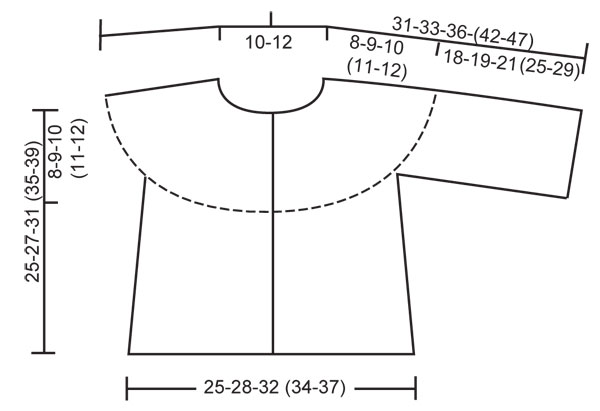
|
||||||||||||||||||||||||||||||||||
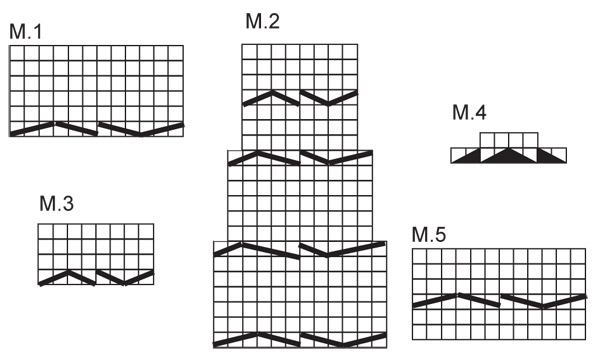
|
||||||||||||||||||||||||||||||||||
|
Have you made this or any other of our designs? Tag your pictures in social media with #dropsdesign so we can see them! Do you need help with this pattern?You'll find tutorial videos, a Comments/Questions area and more by visiting the pattern on garnstudio.com. © 1982-2024 DROPS Design A/S. We reserve all rights. This document, including all its sub-sections, has copyrights. Read more about what you can do with our patterns at the bottom of each pattern on our site. |
||||||||||||||||||||||||||||||||||

































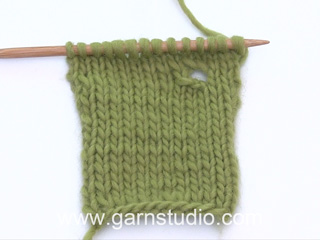









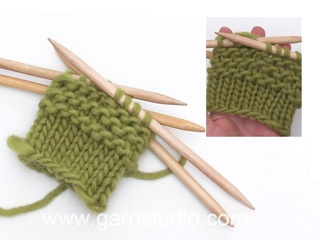






























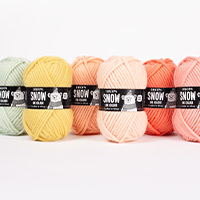
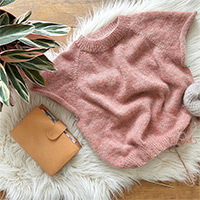
Comments / Questions (96)
Wat aardig! Dank u, ik kan weer verder!
14.03.2017 - 15:27Wat aardig! Dank u, ik kan weer verder!
14.03.2017 - 15:27Hallo, Het lukt me niet... ik ben bij de pas en dan moet je meerderen, dan M1 en 11 st av. Rest r. Minder tegelijkertijd afwisselend?? aan de re EN li kant van ieder av deel . Is dat nu aan de middenkant of aan de mouwkant? Dan M2 boven M1. Maar wanneer komen nu de andere rijtjes kabels van de foto? Fijne dag!
12.03.2017 - 11:56DROPS Design answered:
Hoi Catharina. Je hebt 11 av tussen elke herhaling van M.1. Je mindert afwisselend aan de rechterkant of de linkerkant van deze 11 av. Dwz, de eerste keer (op 1 cm), dan brei je de eerste 2 av st van de herhaling over de hele nld av samen (je hebt nu 10 av per herhaling). De volgende keer (op 2 cm), brei je de laatste 2 st in elke 10 av samen (9 av over) enzovoort. Tegelijkertijd brei je na 1 cm M.1, door volgens M.2 (let op, dat je mindert ook tijdens het breien van M.2). Als M.2 klaar is, brei je door volgens M.3.
13.03.2017 - 12:13I am lost in this pattern! I am having a lot of difficulties understanding it. I am at the part where i added the sleeves onto the yoke. It says to do 5 garter sts,,p2 *M1, P11* Repeat 10 times and finish with M1,P2 and 5 garter sts. The problem is that in the pattern, I have stopped doing cables around and there are only 2 cables in the front. If i repeat 10 times M1, I will be starting new cables....Did I do something wrong?
26.10.2016 - 16:53DROPS Design answered:
Dear Coro, M.1 is worked to the armholes, and when working yoke you continue M.1 on front pieces (first repeat + last repeat on yoke), but at the same time, you will work more M.1 with P11 between each of them: 256 sts in 2nd size = 5 sts in garter st, P2, M.1 (continue as before), *P11, M.1*, repeat from *-* a total of 9 times = over the next 184 sts, and finish with P11, then continue M.1 as before, P2, 5 sts in garter st. Happy knitting!
27.10.2016 - 09:09Stickar koftan i storlek 1/3 mån. När man kommer till oket och ska sticka M2 över alla M1 inkluderas även M1 som är i kanterna och varit med på framstyckeran hela tiden? Eller är det bara de "nya" M1 som man lagt upp på oket?
03.08.2016 - 13:26DROPS Design answered:
Hej. Du stickar då M2 över samtliga M1. Lycka till!
12.08.2016 - 09:30Jeg er begyndt på trøjen i str 1/3 jeg er kommet til de 156 m og skal i gang med mønstret,5 ret 2 vr 3 af bag arb strik 3 strik de 3bag. 3 af foran arb strik 3, strik de 3 foran. så står der der skal være 112m tilbage. jeg kan ikke få mønstret til at gå op.
17.07.2016 - 08:50DROPS Design answered:
Hej Jette. Du strikker saadan: 5 retstrik, 2 vr, M.1 (= 12 m), *6 vr, M.3 (=8 m)* gentager du over de naeste 112 m = 112/14 = 8 gentagelser af mönstret. Du afslutter med 6 vr, M.1, 2 vr og 5 ret = 156 m strikket
19.07.2016 - 14:12Amna Hassan wrote:
Could you explain this for body piece" On next row from RS work 21 sts each side as before, K remaining sts, AT THE SAME TIME dec 9-13-8 (9-14) sts evenly on these sts = 147-157-176 (189-198) sts. On next row from WS work 21 sts each side as before, K remaining sts." 21 sts are the left and right piece? And the middle ones ,where there is dec, is the back piece? Also howwill the pattern adjust? Thank you
01.02.2016 - 10:15DROPS Design answered:
Dear Mrs Hassan, work next row from RS as follows: work the first 21 sts in pattern as before, K over next sts until 21 sts remain at the end of row, at the same time dec evenly 9-14 sts (see size) over these sts and work the last 21 sts as before = 147-198 sts remain. Work next row from WS and then on next row from RS work: 5 sts garter st, P2, M1, P2, stocking st and finish with P2, M.1, P2 and 5 sts in garter st. Happy knitting!
01.02.2016 - 11:15Jeg forstår ikke hvordan indtagningen skal forgå. Hvad betyder skiftevis på højre og venstre side i hvert vr-parti? Og hvad betyder på hver cm???
07.01.2016 - 21:06DROPS Design answered:
Hej Alice, Når du tager ind på hver cm skiftevis i højre og venstre side, gør du således: Tag ind i højre side af hver vrang-parti hele vejen rundt. Strik 1 cm og tag ind i venstre side af hver vrang-parti hele vejen rundt. Fortæt således skiftevis i hver side. God fornøjelse!
25.01.2016 - 15:28Hallo ich habe eine Frage bei der Passe. Wo genau mach ich diese Abnahmen "...ab linkes Partie.." habe ich nicht verstanden.
03.12.2015 - 23:22DROPS Design answered:
"in jeder Links-Partie" bezeichnet die Stellen, an denen Sie linke M stricken - Sie stricken ja im Wechsel M.1 und 11 bzw. 12 M li (je nach Größe). Mit Linkspartie sind diese 11 bzw. 12 M li gemeint. Sie machen nun abwechselnd am Anfang und am Ende einer jeder Linkspartie 1 Abnahme, d.h. Sie stricken in der einen Abnahme-R am Anfang jeder Linkspartie 2 M li zusammen und in der nächsten Abnahme-R am Ende jeder Linkspartie 2 M li zusammen usw. im Wechsel.
08.12.2015 - 19:46Hallo! Ich bin Strickanfänger und habe bisher nur Mützen und Schals mit verschiedenen Mustern gestrickt. Wäre diese Anleitung für mich machbar? Wenn ja, könnte ich dafür auch Drops Paris nehmen und wie sollte ich mit der Maschenanzahl handhaben? Ich wäre für Ihre Antwort sehr dankbar! Viele Grüße!
14.03.2015 - 19:48DROPS Design answered:
Grundsätzlich gilt: Es ist nicht ratsam, Maschenzahlen anzupassen, da sich damit der ganze Schnitt des Kleidungsstücks ändern kann. Sie müssen immer Nadeln und Wolle verwenden, mit der Sie die Maschenprobe erreichen, diese ist ganz wichtig und muss unbedingt eingehalten werden, damit das Ergebnis wie gewünscht wird. Paris ist für diese Anleitung zu dick, aber Sie können alle unter "Garnalternativen" genannten Garne verwenden. Anhand der Lauflänge müssen Sie die Garnmenge dann neu berechnen. Ob die Anleitung für Sie geeignet ist, entscheiden Sie am besten selbst - lesen Sie sich die Anleitung vorher einmal in Ruhe durch. Die Jacke erfordert wegen der Muster ein wenig Aufmerksamkeit.
15.03.2015 - 23:43